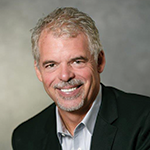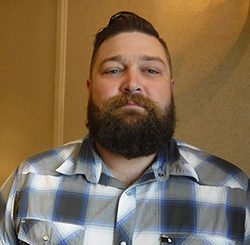Mental Health & Well-being in Construction

By / Mark Breslin
For an industry so concerned with safety, it seems either ironic or pathetic that we tell people to wear their safety goggles while they might be thinking of killing themselves—and still no one is talking about mental and emotional health on the job site.
This reluctance, as organizations and individuals, to be honest with ourselves or others plays a big role in our security and happiness in life—and at work. And the tendency of most organizations and leaders to ignore these fears in the workplace has a significant impact. Now some very compelling research backs it up. Besides suicide rates construction also has higher rates of:
- Opioid and substance abuse
- Depression
- Anxiety
- Anger issues
- Other related problems
And right now, after a year of COVID stressors, more than ever many are pushed to the edge. Why can’t our industry step back and take an authentic look as the employee as a whole person? Why is it such a stigma for construction workers to admit they are struggling?
Fear.
- Fear of looking weak.
- Fear of being vulnerable.
- Fear of being rejected.
- Fear of being judged.
- Fear of failure and thus of risk to our self-image and esteem.
Defeating these secrets requires people to feel safe. Safety for and with each other builds bonds that enable people to stretch, risk, and trust. They also allow people to be authentic and bring their best selves to both others and the workplace. For learning, coaching, mentoring, and healing, this is essential.
Mortenson, a proactive and forward-thinking client of mine, took this on in an admirable way. They built a Toolbox Talk—a craft-focused update shared by project leaders to ensure team members have access to important information—highlighting mental health and tied it to the timing/pressures of COVID. Their field leaders reported that they have never in 20 plus years had more positive feedback from the field on something they presented. Story after story about the workers, their spouses, and their kids came spilling out. The company was blown away by the response. And more importantly, its leaders earned the respect of their people because they simply showed they cared.
In many, if not most, construction workplaces this willingness to deal with employee wellness at its roots does not exist. It is not valued as it should be. What takes its place are “suck it up” expectations, employee quiet desperation, or worst—everyone seeing problems but not knowing what to do or say.
Many construction leaders accept this because that is what they are most accustomed to. But those with courage and vision will put in the work to create a supportive safe and empathetic leader response. It might sound like this:
- We accept you and don’t judge you.
- If you are struggling, you are not alone.
- There are resources for those of us who are challenged.
- I have walked in your shoes and know what you are facing.
- We’ve got your back.
For leaders it can be a challenge to prioritize emotional wellness and care. It doesn’t seem to pay the bills. That is a pretty old school viewpoint. I cannot emphasize this enough; caring about people matters and pays.
In my 30 years of organizational leadership, I have seen it all. Employees with anxiety, serious health issues, crumbling marriages, depression, financial declines, substance abuse, and more. I have seen all of that in my own extended family, and I am sure you have as well. I absolutely consider it my role to create a supportive (not enabling) environment and provide resources and references to all who are in need. That is just in line with the leadership values that I believe in. Everyone is human and everyone has their own struggles.
Here are three ways to promote emotional and psychological wellness in your organization:
- Be the best example with your own emotions, behaviour, and communication. A leader that shows authenticity, vulnerability, and empathy gets loyalty and buy-in in return. Openness and trust follow allowing people to come to you. Being your best self, no matter what others think is real strength. Being open to and for others gives others the permission to do the same.
- Communicate about resources. Talk about mental health. Do the Toolbox Talk. Consider providing additional resources. Mortenson, the client contractor I mentioned, also purchased subscriptions to Joyable, a mental health app, for thousands of employees to use anonymously. Make sure your people have a trusted go-to person in the company. Know what is available through your association and/or union partners and let your employees know.
- Do not compromise, rationalize, or ignore any self-destructive behaviours of your team. A lot of the time we (especially field leaders) see it and feel too awkward to act. A couple of times in my life, I was personally a little beat down and burnt out. And most of my team could easily see it and rallied for me for a few months. I was so incredibly grateful and came through it with more loyalty and respect for them than ever.
Do it for your people. Not because they make you money, but because it is the right thing to do and someone has to step up. When you let it go, you let down your team and yourself. This kind of safety is not about protective goggles and lift with your knees. This is about life.
What makes a healthy person, a healthy family, or a healthy child? What helps them grow and thrive as they should? Yeah. Same thing. Psychological and emotional health and wellness. Even in our rough and tumble industry it’s going to be worth the time and effort. ▪
Mark Breslin is an author, speaker, CEO, and influencer inspiring change for workplace success across all levels of business. Mark has improved leadership, accountability, innovation, and engagement for organizations and individuals. He has spoken to more than 400,000 people and published hundreds of thousands of copies of his books on leadership and workplace culture. See his work at www.breslin.biz



